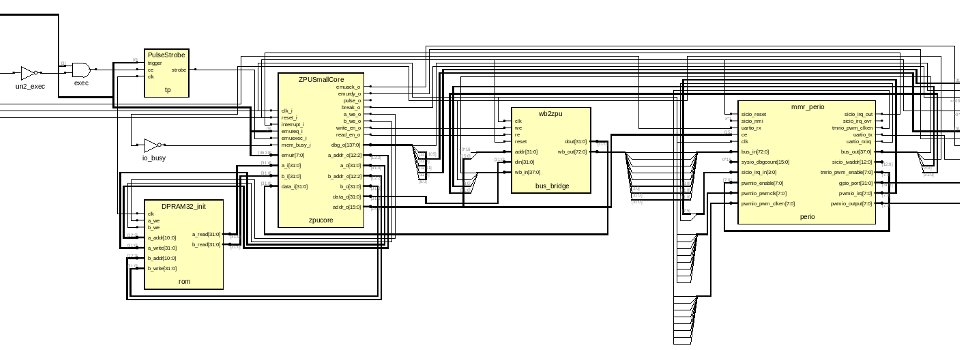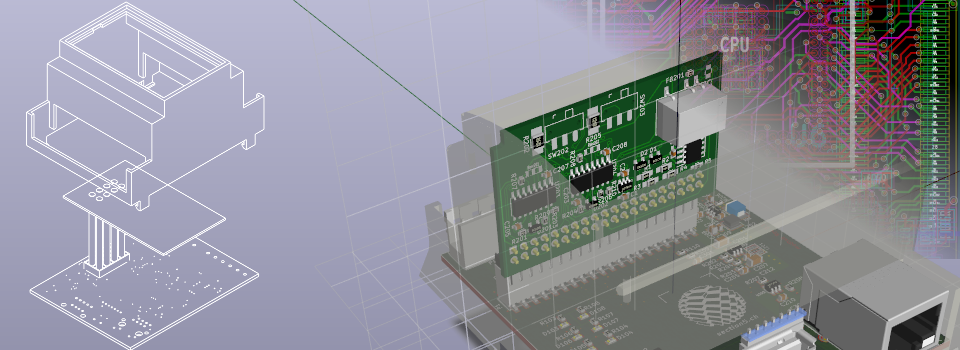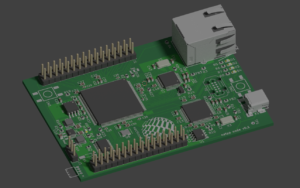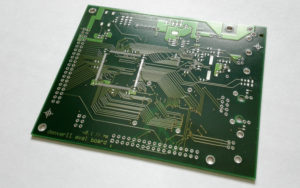Continuous integration (‘CI’) for hardware is a logical step to take: Why not do for hardware, what works fine for software?
To keep things short: I’ve decided to stick my proprietary RISC-V approach ‘pyrv32’ into the opensourced MaSoCist testing loop to always have an online reference that can run anywhere without massive software installation dances.
Because there’s still quite a part of the toolchain missing from the OpenSource repo (work in progress), only a stripped down VHDL edition of the pyrv32 is available for testing and playing around.
This is what it currently does, when running ‘make all test’ in the provided Docker environment:
- Build some tools necessary to build the virtual hardware
- Compile source code, create a ROM file from it as VHDL
- Build a virtual System on Chip based on the pyrv32 core
- Downloads the ‘official’ riscv-tests suite onto the virtual target and runs the tests
- Optionally, you can also talk to the system via a virtual (UART) console
Instructions
This is the quickest ‘online’ way without installing software. You might need to register yourself a docker account beforehand.
- Log in at the docker playground: https://labs.play-with-docker.com
- Add a new instance of a virtual machine via the left panel
- Run the docker container:
docker run -it hackfin/masocist - Run the test suite:
wget section5.ch/downloads/masocist_sfx.sh && sh masocist_sfx.sh && make all test - Likewise, you can run the virtual console demo:
make clean run-pyrv32 - Wait for Boot message and # prompt to appear, then type h for help.
- Dump virtual SPI flash:
s 0 1 - Exit minicom terminal by Ctrl-A, then q.
What’s in the box?
- ghdl, ghdlex: Turns a set of VHDL sources into a simulation executable that exposes signals to the network (The engine for the virtual chip).
- masocist: A build system for a System on Chip:
- GNU Make, Linux kconfig
- Plenty of XML hardware definitions based on netpp.
- IP core library and plenty of ugly preprocessor hacks
- Cross compiler packages for ZPU, riscv32 and msp430 architectures
- gensoc: SoC generator alias IP-XACT’s mean little brother (from another mother…)
- In-House CPU cores with In Circuit Emulation features (Debug TAPs over JTAG, etc.):
- ZPUng: pipelined ZPU architecture with optimum code density
- pyrv32: a rv32ui compatible RISC-V core
- Third party opensource cores, not fully verified (but running a simple I/O test):




